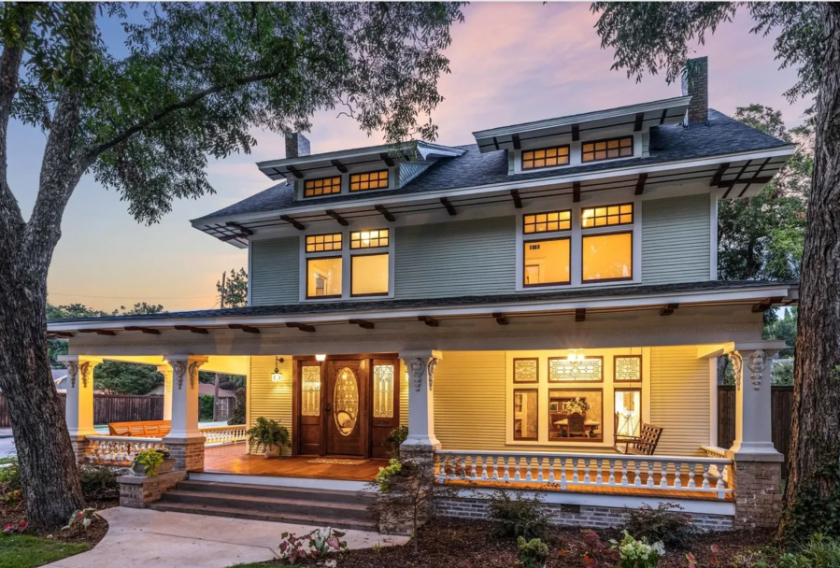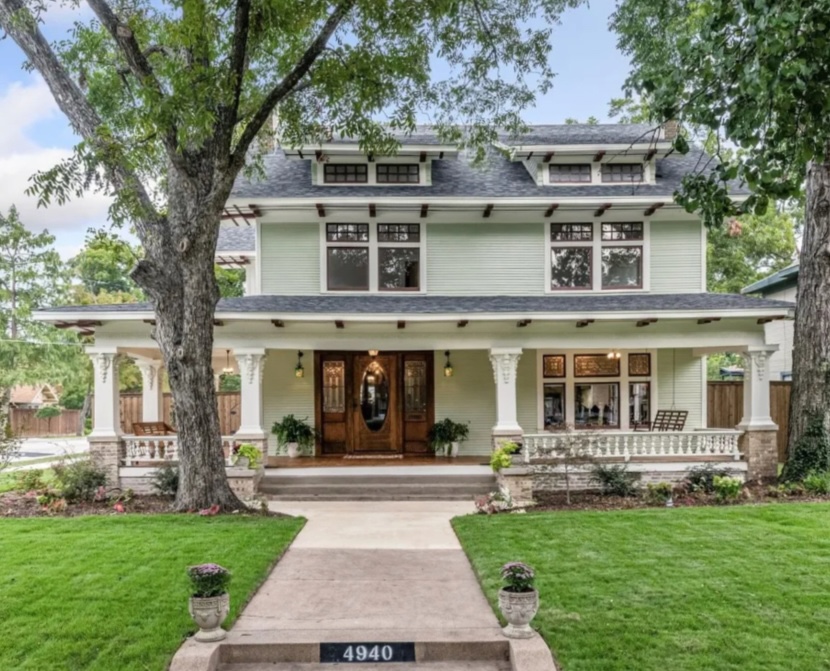 Current photos by William Anthony Stahl
Current photos by William Anthony Stahl
This historic Munger Place Prairie Four-Square once looked like the house all the kids avoid at Halloween. Scary doesn’t even begin to describe the dilapidated home, and I think most of the neighbors assumed it could not be saved. Then Zak and Beth Mailey came along.
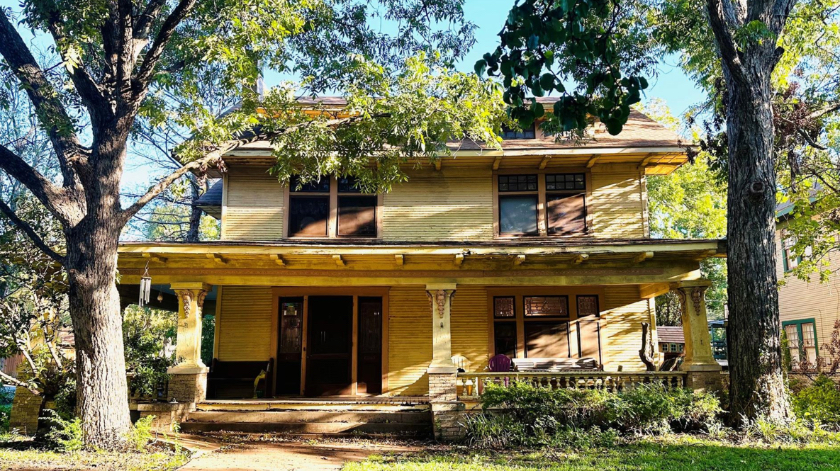
The Maileys are not new to restoration. In fact, it was while working on a home in the neighborhood that they saw this Munger Place Prairie Four-Square and fell for it. They never dreamed they would have the opportunity to bring it back to its former glory days. However, when they were on vacation in Italy, a random text from a friend informed them that the house was for sale. “We called our business partner and he said Let’s do it, so we bought it without ever having seen the inside,” Beth said.
That’s probably for the best because, as I said, it had fallen into a pretty dire state of disrepair. Even some of the most respected people in the historic preservation community were doubtful about its future.
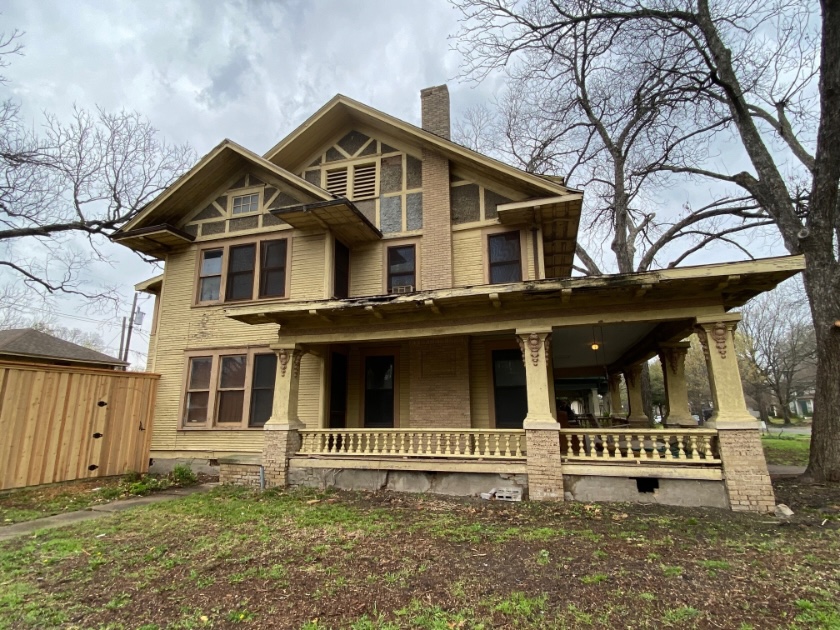
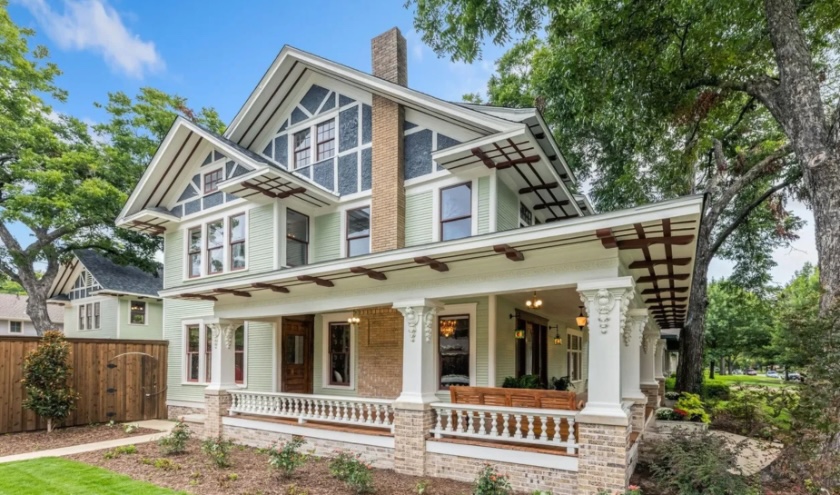
The Maileys did some research and talked to neighbors to glean information about their new project. They believe the influential real estate developer, J.D. Aldredge, was responsible for this home being built. Piecing together the information I’ve found in the Dallas Morning News archives, it seems accurate. The obituary for Aldredge has the following information:
“While in the real estate business, he was an important factor in the development of Dallas, and induced the late R.S Munger to open Munger Place, one of the first important additions.”
Interesting to think that without Aldredge, we might never have had Munger Place!
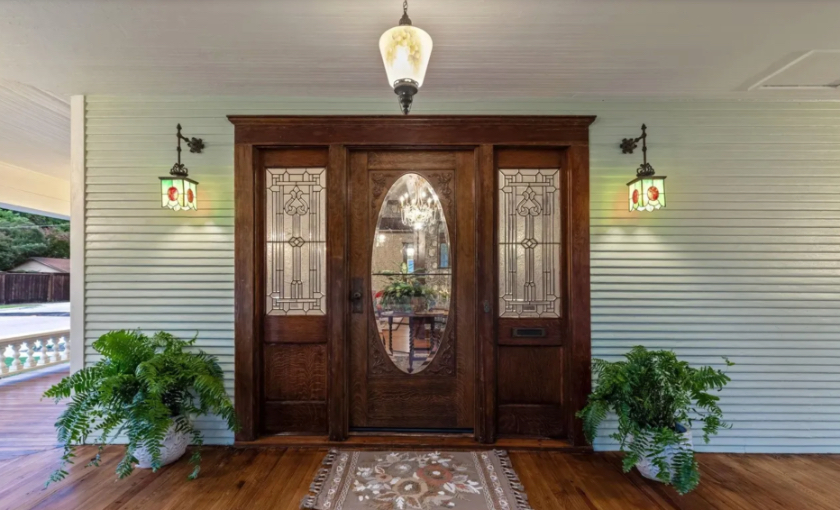
The Munger Place Prairie Four-Square has a 1905 build date according to DCAD, but a 1911 date is listed in historic paperwork, and it is believed to be one of the original model homes. That makes sense to me with the massive wrap-around porch as a defining feature. By 1922, it was a boarding house and remained so until at least the late 1960s. It was not uncommon to turn large homes into boarding houses. It became a trend as the affluent began moving out of the center of Dallas, and rapid population growth created a need for more affordable housing.
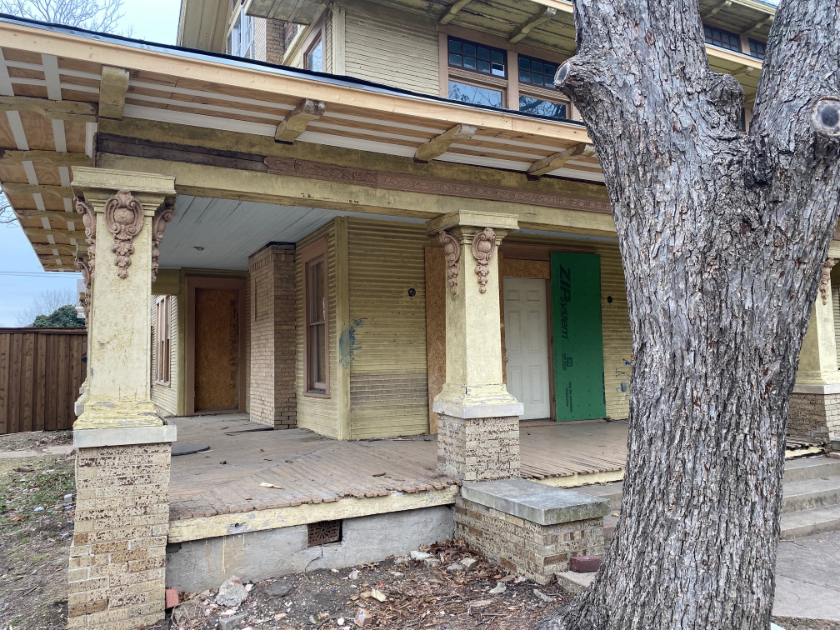
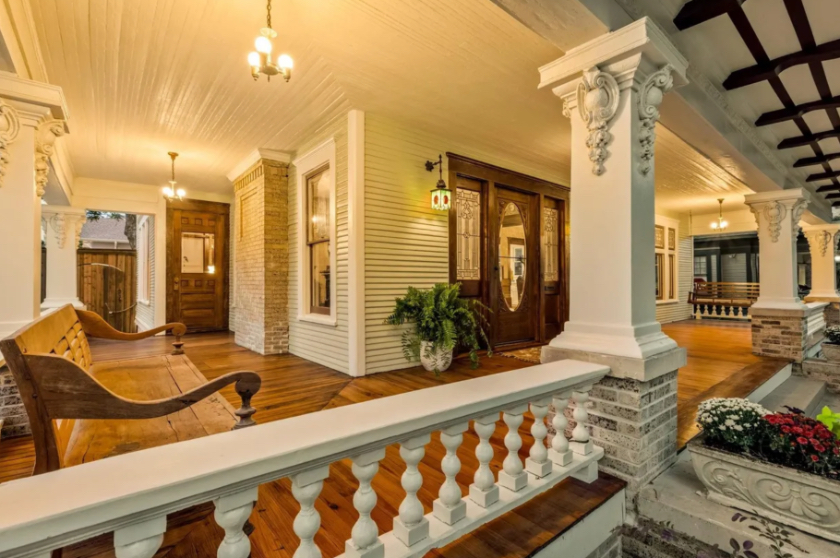
By the 1970s, Munger Place started to be rediscovered by our urban pioneers. Harry and Marian Gibson were among them, and they bought this Munger Place American Four Square around 1972, from what I’ve been told. They lived here for well over 40 years, and I am assuming they are the ones who did the conversion from a boarding house to a single-family residence. If any of our readers know that not to be true, please let me know.
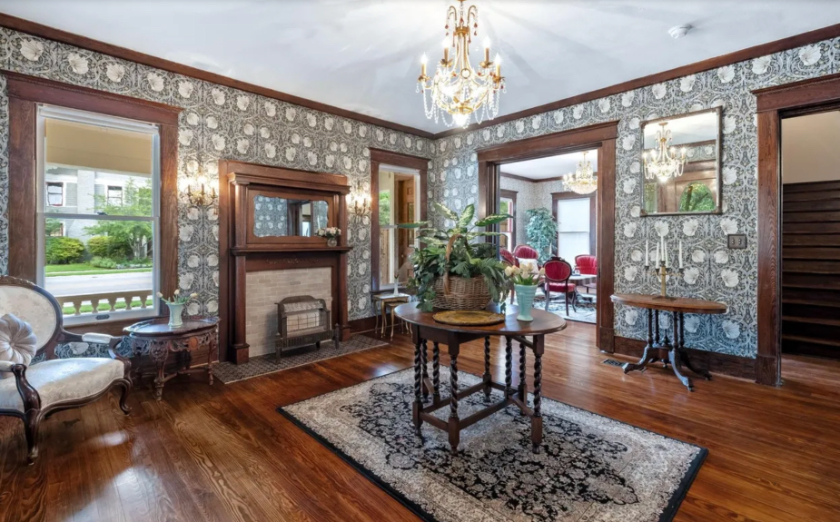 The double-hung windows with rope-and-pulley balances are now fully restored and operable.
The double-hung windows with rope-and-pulley balances are now fully restored and operable.
When the Maileys finally got a chance to walk inside this 3,666 square foot home, they were not the least bit intimidated by the work ahead of them. They were excited by the challenge and determined to bring this home back to its glory days.
“We restored everything,” Beth said. “As we were doing the demo, we found floral wallpaper everywhere. That inspired our design for finishing it out. We framed pieces of the original samples and have them displayed in the house.”
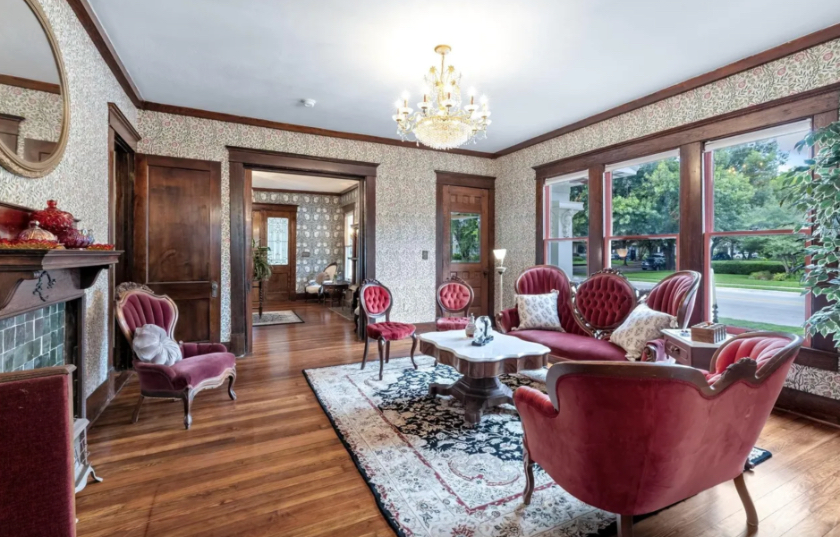 The Maileys chose to stage the home in a period style, scouring the city for the red velvet Victorian furnishings. Oddly enough, neighbors have told me that the Gibsons also had the living room furnished with red velvet period pieces! What goes around, comes around.
The Maileys chose to stage the home in a period style, scouring the city for the red velvet Victorian furnishings. Oddly enough, neighbors have told me that the Gibsons also had the living room furnished with red velvet period pieces! What goes around, comes around.
One of Beth’s passions is hardware. She has an old Sargent & Co. catalog for reference, and if you ever need to know how to restore hardware, Beth is your go-to. Some of her methods involve immersing the hardware in a boiling salt and vinegar mixture and using dental descalers!
The project has not been without its share of interesting challenges. “I got a call from code compliance one day telling me the door was open,” Zak said. “I was there the day before, and it was closed, so I was confused. Then the code officer investigated further and stated that, in fact, there were no doors on the front or side of the house. They had been stolen, including hinges, along with a piece of stained glass in the house!”
The Maileys did not pause. They found a beautiful Tiger Oak front door with oval beveled glass and added a bit of a Victorian accent to the house.
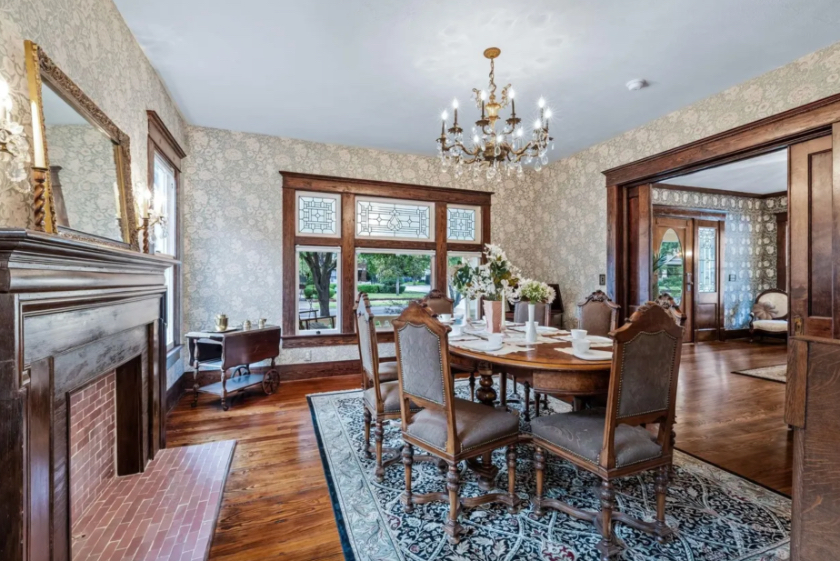
Over the course of two years, they worked with Aaron Trecartin, the principal architect of Building Block, who specializes in historic and conservation districts. The team gutted and redid the bathrooms and kitchen. Sleeping porches were enclosed, and a beautiful gabled addition was created for the back of the house with a third-floor staircase matching the original beautifully. The Maileys’ attention to period detail, right down to the restoration of the push buttons for electricity, is truly impressive.
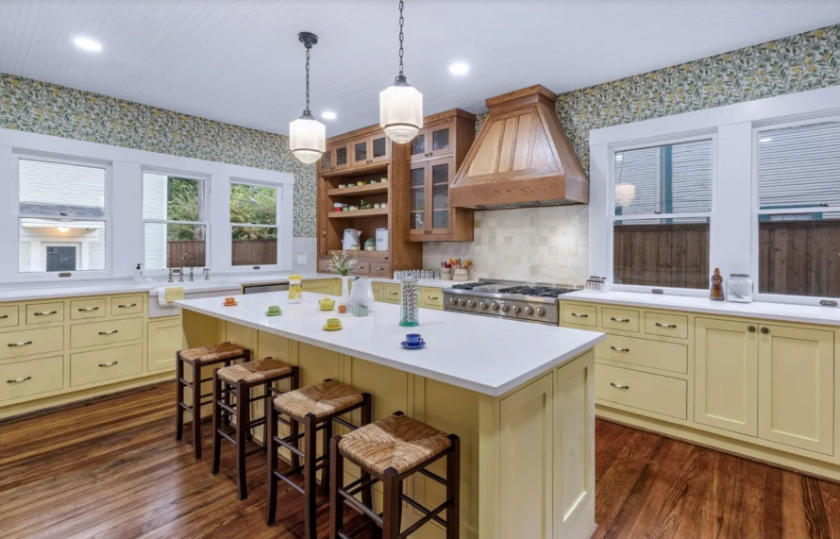
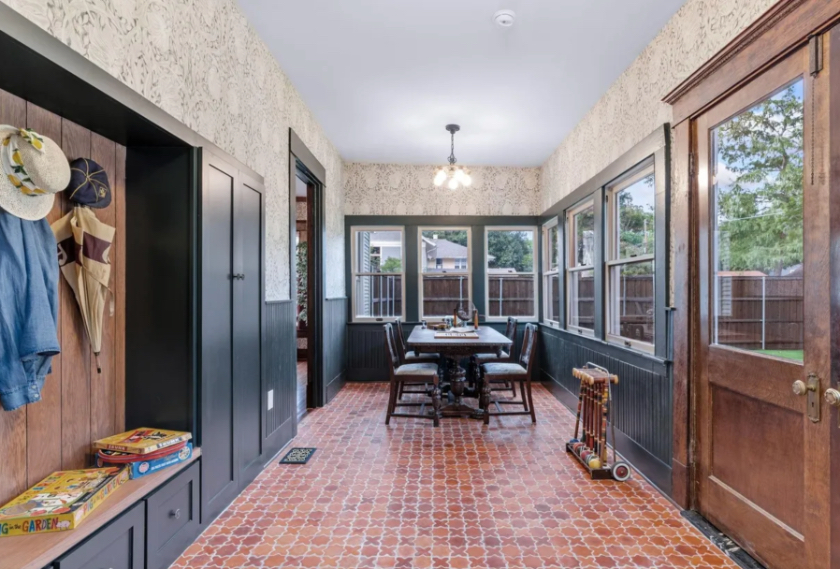
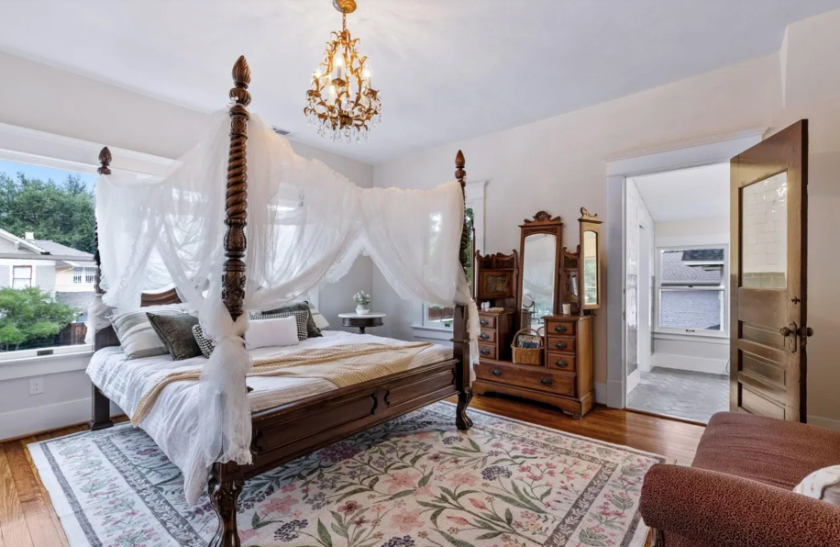
The house now has four bedrooms, three and a half bathrooms, that wonderful third-floor addition, and a brand new garage with an apartment above it. These modern updates, combined with the house’s rich history, offer a unique blend of historic charm and contemporary living.
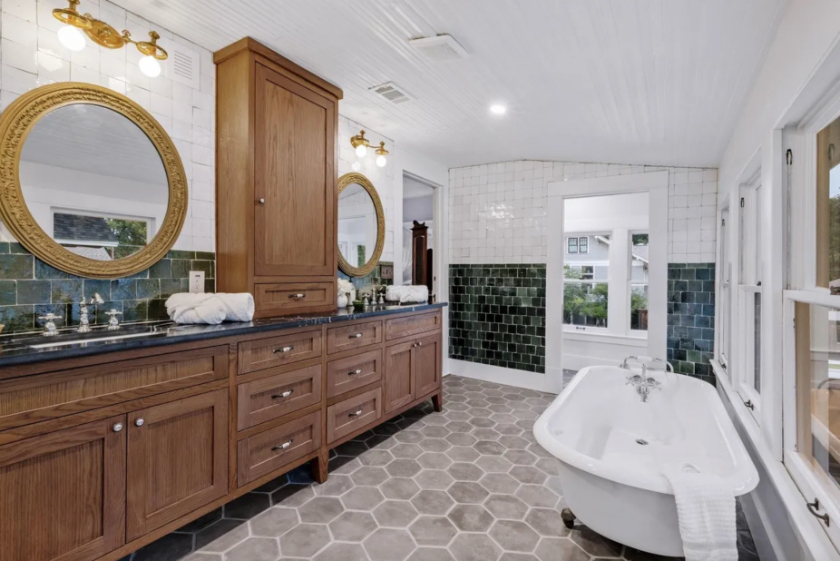
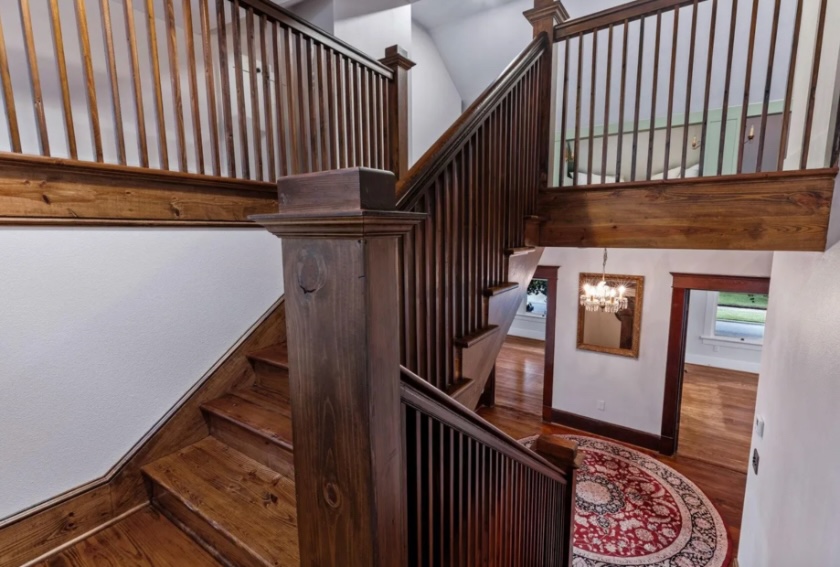
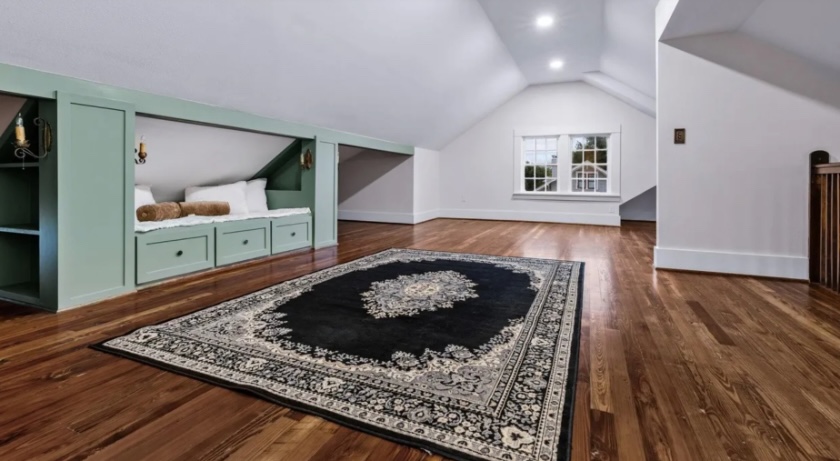
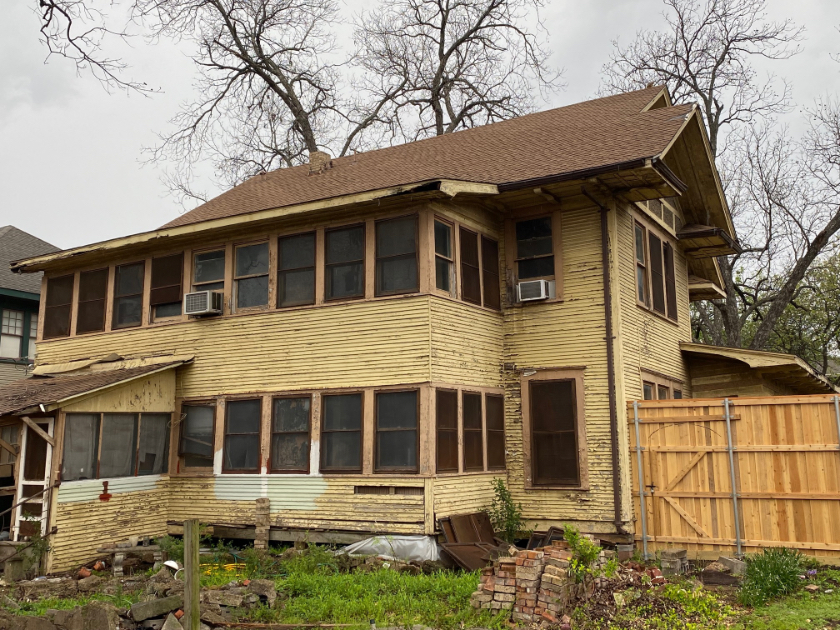
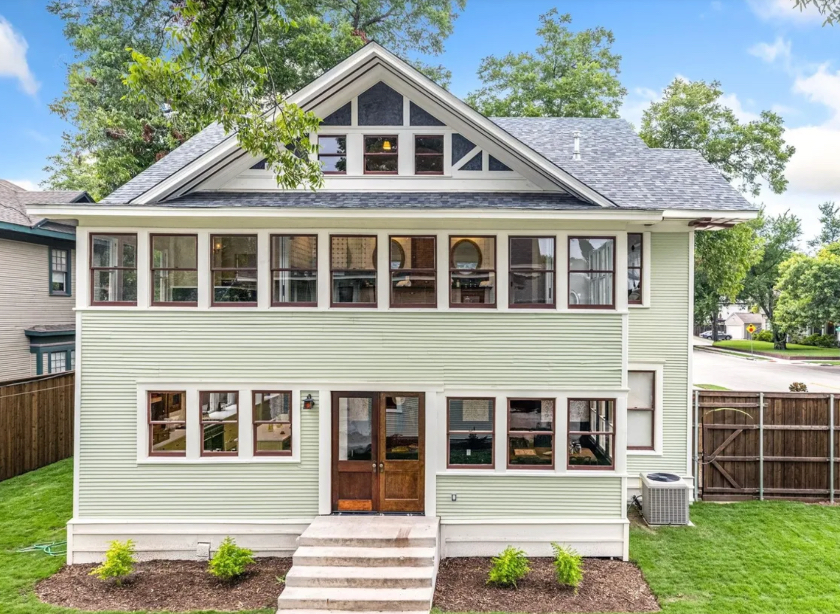
“We tried everything to save the garage,” Beth said. “It was dangerous, so we took off the windows and doors and saved them for the new build to make it look as original as possible.”
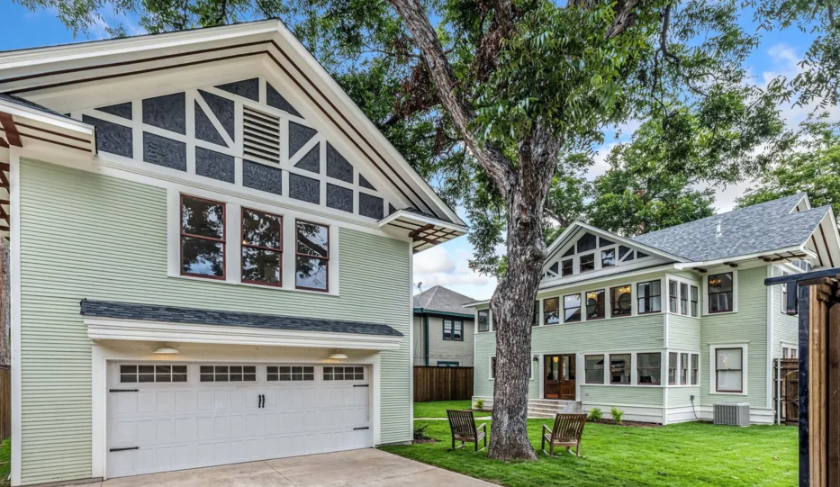
This is a unique opportunity to move right into a fully refurbished and updated piece of Dallas history, in one of the most desirable neighborhoods in Dallas.
Zak Mailey with OnDemand Realty has this Munger Place Prairie Four-Square at 4940 Worth St. available for $1.95 million.
